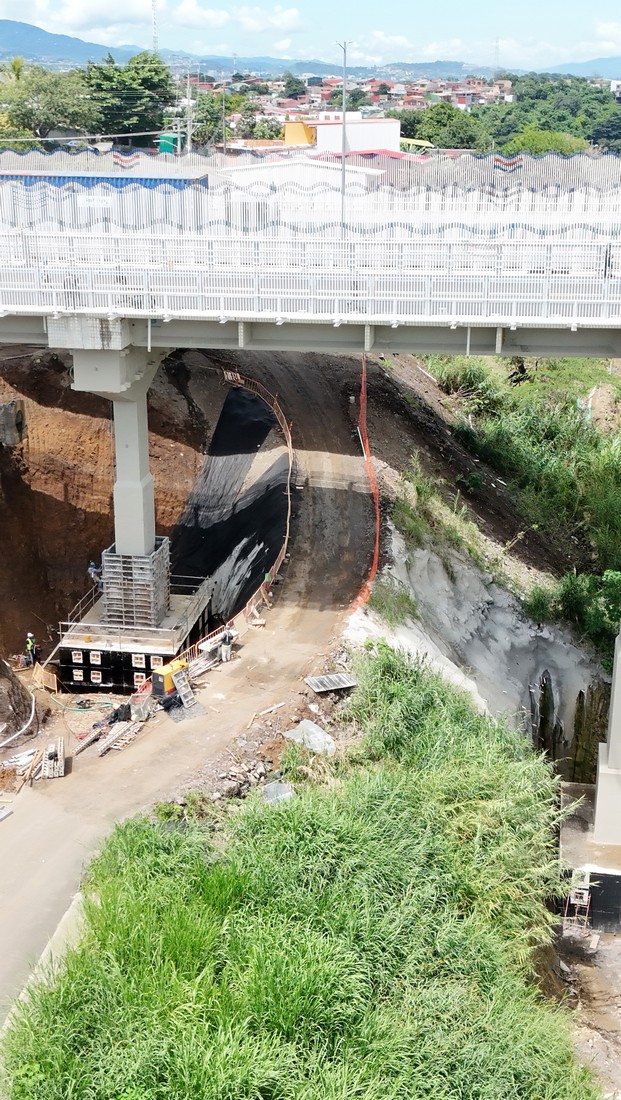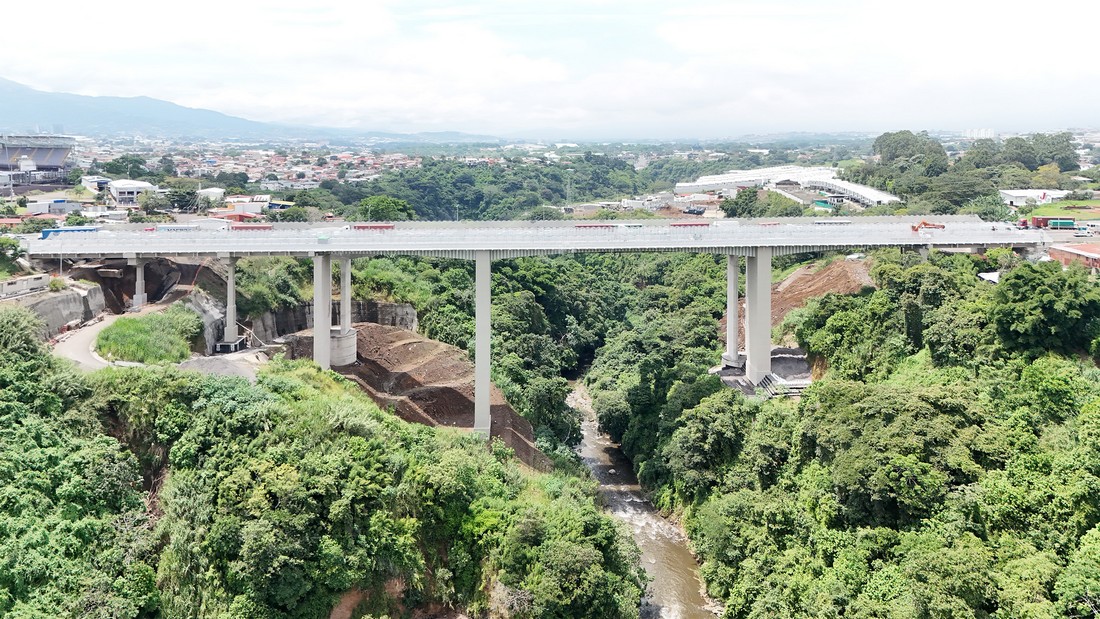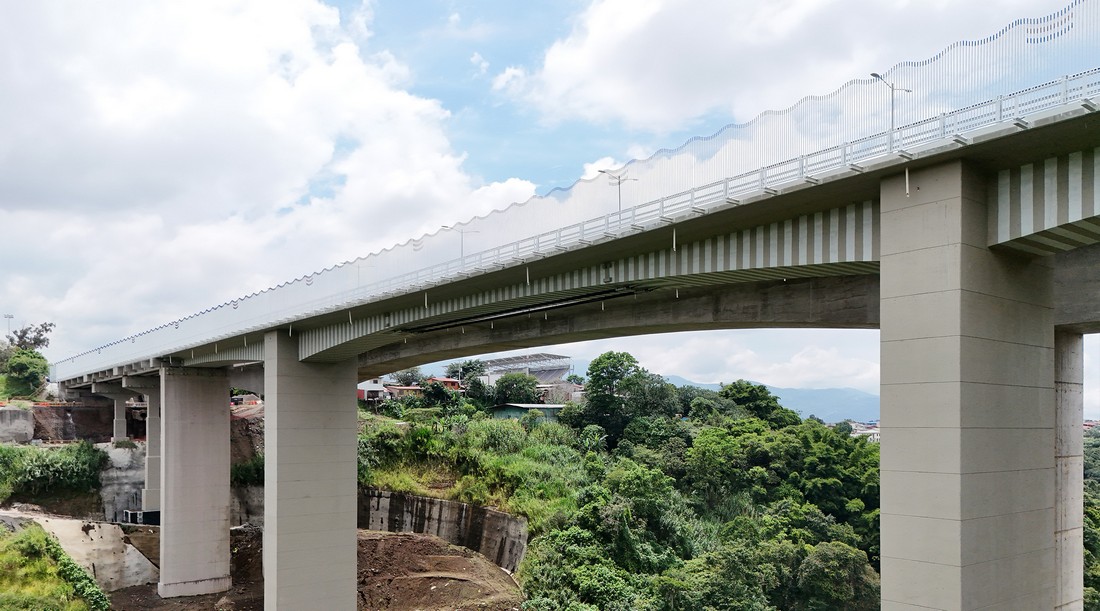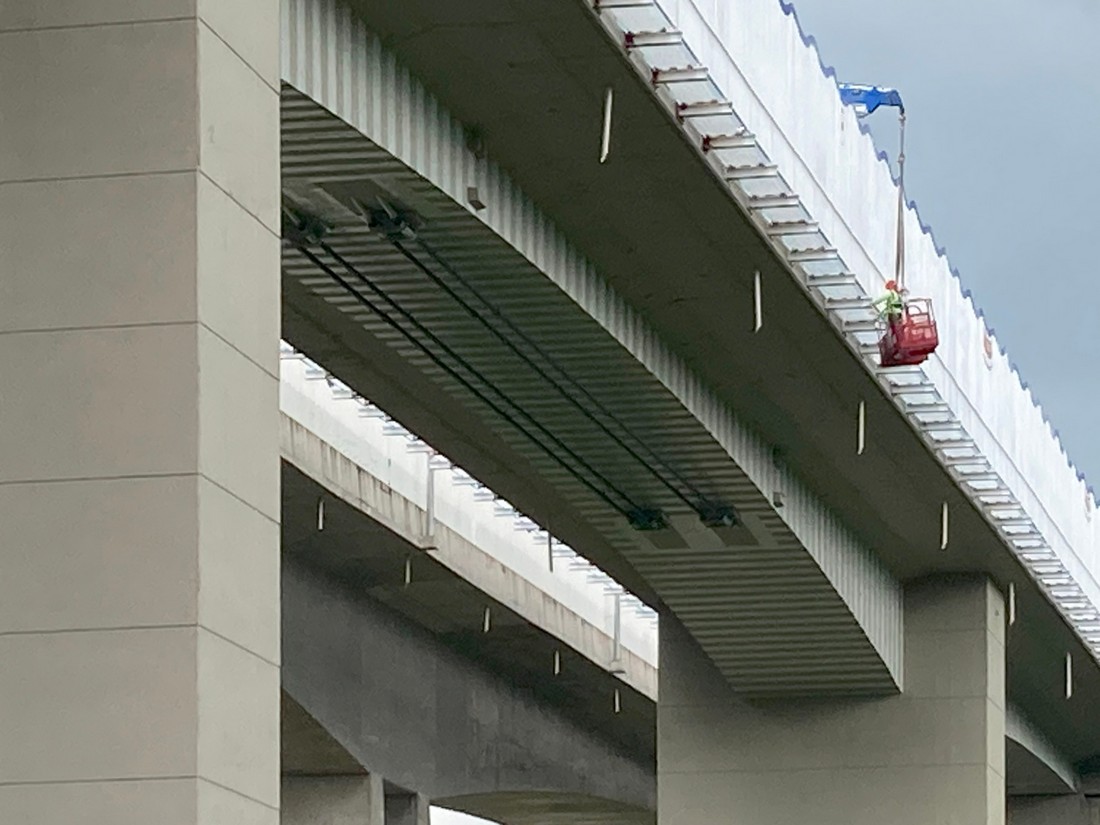
On October 11th, the bridge over the Virilla River on National Route 32 in Costa Rica was opened to traffic following rehabilitation and reinforcement works carried out over the past few months. The bridge has been renamed as the Ricardo Saprissa Aymá Bridge. National Route 32 is one of the country's main roads, connecting San José with Limón, Costa Rica's main port on the Caribbean, with an estimated traffic of between 25,000 and 30,000 vehicles daily. The project and construction were managed by the United Nations Office for Project Services (UNOPS), on behalf of the National Road Council (CONAVI). The solution, designed by FHECOR and executed by the consortium Grupo Puentes-Meco, includes the structural rehabilitation and expansion of the bridge deck, increasing the road’s capacity to the current two lanes, with the possibility of future expansion to three lanes. The bridge, originally built in the 1980s, has a total length of 285 meters, divided into 7 spans. It consists of a main bridge in the 3 central spans made of prestressed concrete segments with post-tensioned reinforcements, constructed using the balanced cantilever method, with a maximum span of 82.8 meters. The approach spans on both sides are made of double-T concrete beams. The structure exhibited various durability issues, combined with a general decrease in the strength of the concrete structural elements. Additionally, it was vulnerable to seismic events as it was not designed to meet modern seismic standards. The executed solution includes the expansion and reinforcement of the main bridge through the installation of a new external post-tensioning system and the strengthening of the post-tensioned box girder using carbon fiber fabrics on both sides. The approach spans, made of post-tensioned beams, have been replaced by new spans of the same type. To improve the structure’s seismic performance, the foundations and the lower sections of the piers have been reinforced, and new abutments have been constructed on both ends. Additionally, expansion joints were eliminated, and bearing devices were replaced. FHECOR was responsible for the design of the reinforcement and expansion, as well as for providing technical support to UNOPS throughout the project. Link to the video presentation of the works




